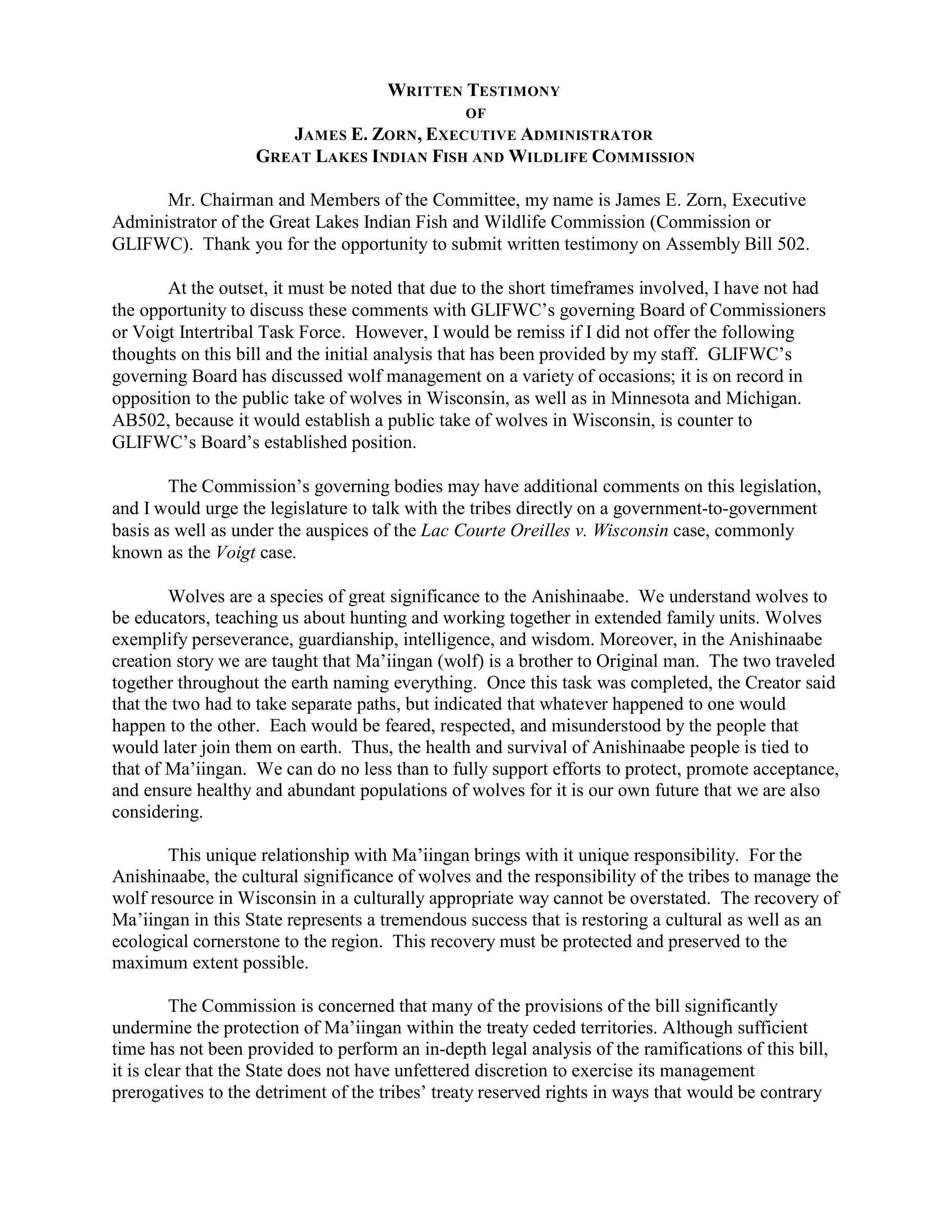Before European colonization of the Americas, many indigenous peoples coexisted with wolves (Fogg et al., 2015). Anishinaabeg still draw lessons from the wolf and Anishinaabeg love Ma’iingan (the wolf) as their brother (Benton-Banai, 2010).
With colonization, Europeans introduced livestock and a fear of the wolf to the continent, resulting in the near extirpation of the wolf (Treves and Bonacic, 2016). Resolving conflicts between wolves and livestock and between those who love and fear the wolf are still apparent in fluctuating protection status for the wolf and in contrasting perceptions of the animal. This page highlights modern issues that the wolf faces as a result of human impacts.
Endangered Species Act List
Since the passing of the Endangered Species Act, the legal protections for wolves in various regions of the U.S. have fluctuated (U.S. Action Timeline). Below is a timeline of protection status changes from http://biologicaldiveristy.org where a fuller history of legal issues surrounding the wolf can be found.
1974- Gray wolves listed as endangered across the country
1978- Gray wolves relisted as endangered in MN and threatened in rest of lower 48
2003- The Fish and Wildlife Service establishes separate management Great Lakes and Northern Rockies regions. Great Lakes wolves are downlisted to threatened and protections for Northern Rockies wolves is reduced.
2005- The 2003 downlisting of the gray wolf is overturned.
2007- Great Lakes wolves are delisted.
2008- Rocky wolves delisted and then relisted.
2008- Great Lakes wolves are relisted.
2009- Great Lakes wolves and Northern Rockies wolves delisted except for those in Wyoming.
2009- Great Lakes wolves are relisted.
2011- Great Lakes wolves are delisted.
2014- Great Lakes wolves are relisted.
Treaty Rights
Anishinaabeg fought for their treaty rights to be recognized starting in the mid 1900s through peaceful protest via exercising their rights and through litigation lead by the Tribble brothers (Treaty Rights; Thompson 2017). The extent of these rights are still being explored and protected by the Great Lakes Indian Fish and Wildlife Commission, the 1854 Treaty Authority, and by individual Anishinaabe bands (Treaty Rights; Thompson 2017).
Tribal Consultation
Tribes must be involved in Federal and State actions related to the conservation of natural resources and endangered or formerly endangered species according to Secretarial Order #3206: American Indian Tribal Rights, Federal-Tribal Trust Responsibilities, the Endangered Species Act and the treaty rights recognized by LCO v. Wisconsin (Wildlife Service; LCO v. Wisconsin). Despite this, Tribes have not been consulted on a government-to-government base in delisting issues as former Great Lakes Indian Fish and Wildlife Commission Director James Zorn outlines in the following letter:
Competition for game?
Anishinaabeg drew lessons in hunting from Ma’iingan (Zorn, 2012). Today, those opposed to Ma’iingan remaining in their historical homerange often argue that wolves kill too many deer. The Isle Royale study of Wolf and Moose interactions is one of the longest running studies of it’s kind and serves as an evidence based clue to other wolf-prey interactions in Anishinaabe ceded territory.
Conflict with livestock
Livestock were not kept by indigenous peoples of North America, but were introduced with European colonization. Wolves, along with other predators native to Anishinaabe ceded territory, at times prey on domestic animals such as cattle and deer. The Human Wildlife Conflict and Coexistence field is growing and adapting to scientifically address how wolves and cattle, for example, can coexist on the same landscape. The Bad River Band of Lake Superior Chippewa Indians is currently funding ongoing research into how modern farmers can coexist with livestock.
Legal Protection for Ma’iingan
The proposal and occurrence of wolf hunts as well as listing and delisting of wolves has sparked tribal and non-tribal scholars to explore the legal standing that Anishinaabeg have to protect their brother.
WOLVES, LONE AND PACK: OJIBWE TREATY RIGHTS AND THE WISCONSIN WOLF HUNT by Jason Sanders
Works Cited
Benton-Banai, E. (2010). The Mishomis book: the voice of the Ojibway. Minneapolis, MN: University
of Minnesota Press.
Fogg, B. R., Howe, N., & Pierotti, R. (2015). Relationships Between Indigenous American Peoples and Wolves 1: Wolves as Teachers and Guides. Journal of Ethnobiology,35(2), 262-285. doi:10.2993/etbi-35-02-262-285.1
LCO v Wisconsin (US District Court for the Western District of Wisconsin February 21, 1991).
Treves, A., Bonacic, C. (2016). Humanity’s Dual Response to Dogs and Wolves. Trends in Ecology & Evolution, 31(7),
489-491. doi:10.1016/j.tree.2016.04.006
U.S. Wolf Action Timeline. (n.d.). Retrieved April 10, 2019, from https://www.biologicaldiversity.org/campaigns/gray_wolves/action_timeline.html
Thompson, Douglas. “The Right to Hunt and Fish Therin.” The Right to Hunt and Fish Therin, 1854 Treaty Authority, 2017. http://www.1854treatyauthority.org/images/The-Right-to-Hunt-and-Fish-Therein.final.pdf.
Treaty Rights, Retrieved April 28, 2019, from http://www.glifwc.org/TreatyRights/.
Wildlife Service. (n.d.). Working with Tribes | American Indian Tribal Rights, Federal-Tribal Trust Responsibilities, and the Endangered Species Act. Retrieved from https://www.fws.gov/ENDANGERED/what-we-do/tribal-secretarial-order.html
Zorn, J. E. (2012). Testimony of James E. Zorn [Letter written February 1, 2012 to Wisconsin State Assembly Committee on Natural Resources]. Retrieved April 17, 2019, from http://timberwolfinformation.org/wp-content/uploads/2012/02/GLIFWCAB502_1_12.pdf



